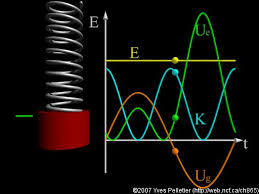SHM in Electrostatics?

A thin fixed ring of radius has a positive charge uniformly distributed over it. A particle of mass having a negative charge , is placed on the axis at a distance of ( ) from the center of the ring. Find the time period of oscillation of the negatively charged particle.
If the answer is of the form , find .
Hint : The motion is simple harmonic by nature.
The answer is 9.
This section requires Javascript.
You are seeing this because something didn't load right. We suggest you, (a) try
refreshing the page, (b) enabling javascript if it is disabled on your browser and,
finally, (c)
loading the
non-javascript version of this page
. We're sorry about the hassle.
Magnitude of the force on the point charge due to an element d q is d F = 4 π ε o 1 r 2 d q Q .
For every differential element of the ring, there is a diametrically opposite element. The components of forces along the axis will add up, while those perpendicular to it will cancel each other.
So, F = ∫ d F cos θ = cos θ ∫ d F = r x ∫ 4 π ε o 1 [ − r 2 Q d q ] = − 4 π ε o 1 ( a 2 + x 2 ) 3 / 2 Q q x , where r is the distance between the charge and the differential element of the ring, as r 2 = ( a 2 + x 2 ) .
As the restoring force is not linear, the motion will be oscillatory. Also, x 2 < < a 2 .
F = − 4 π ε o 1 a 3 Q q = − k x and k = 4 π ε o a 3 Q q .
Time period of simple harmonic motion is given by T = 2 π k m = 2 π q Q 4 π ε o m a 3 .